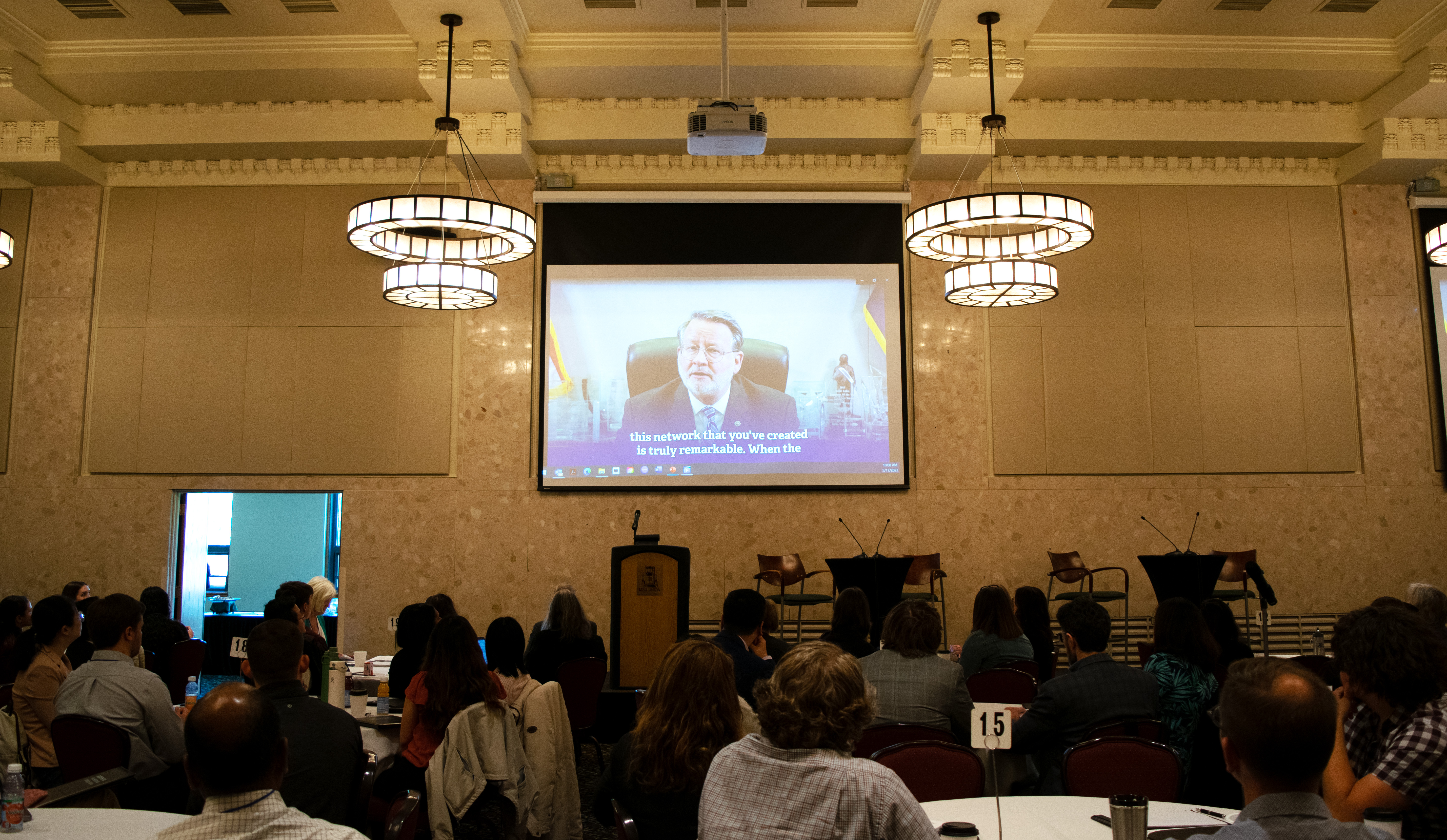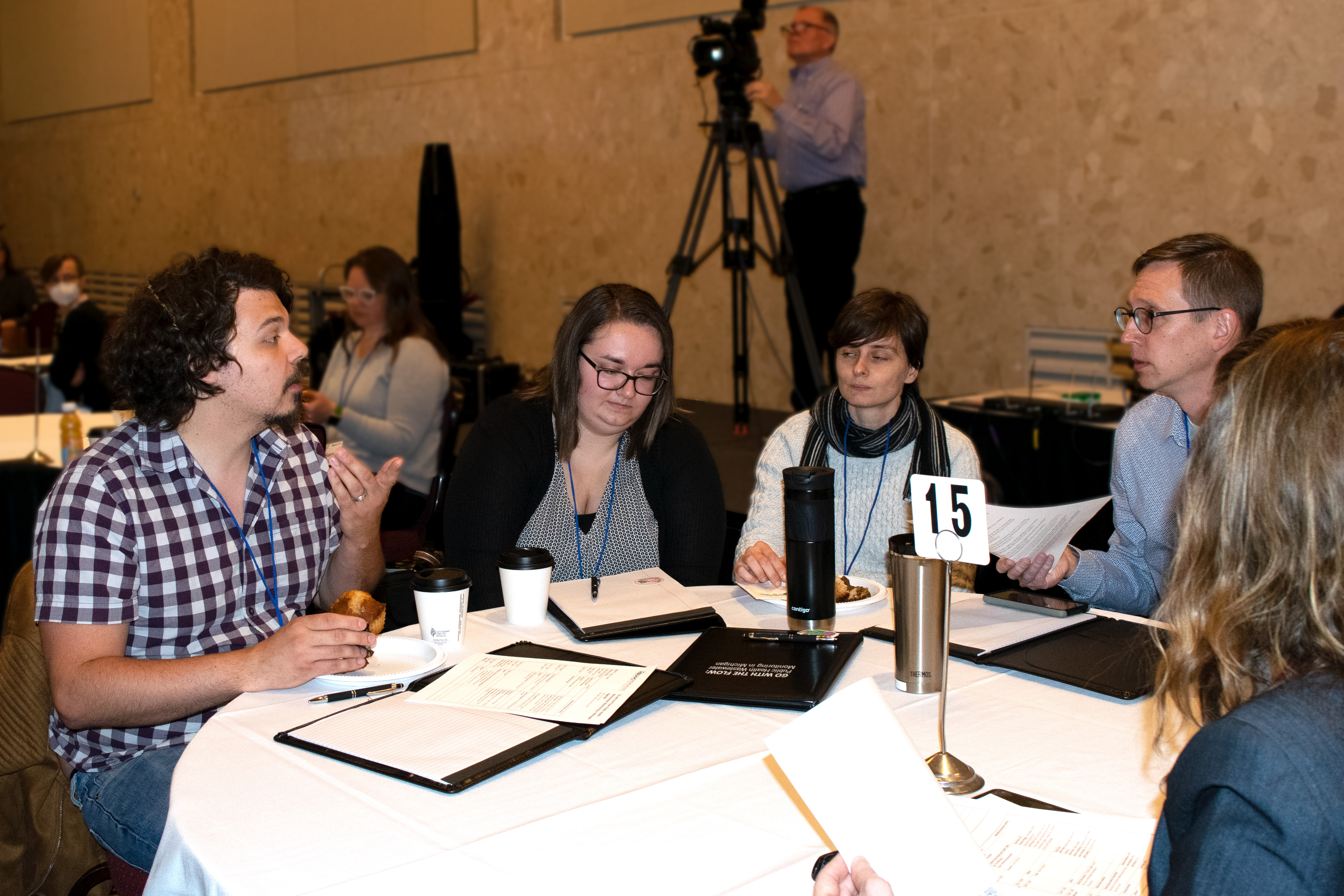Video from this event can be found on the Water Alliance YouTube playlist.
Conference recently held at MSU brought leading researchers from around the state to discuss public health.
Almost one week after the United States dropped its emergency declaration regarding the COVID-19 pandemic, top researchers in public health and safety convened in East Lansing to discuss wastewater-based epidemiology for the early detection of viral outbreaks. Presented by the Michigan Network for Environmental Health and Technology and sponsored by Michigan State University and the Michigan Department of Health and Human Services (MDHHS), Go With The Flow: Public Health Wastewater Monitoring in Michigan, May 17-18, brought together leading researchers from around the state to discuss public health and wastewater surveillance, including opportunities, challenges, and the need for partnerships for action and engagement.
The conference featured a message from Michigan U.S. Senator Gary Peters, who highlighted the remarkable professional network created by public health researchers during the pandemic. For example, public health experts and wastewater researchers worked together to detect COVID-19 in wastewater, which provided public health experts with valuable information about the spread of the disease.

Many leaders at the intersection of water research and public health participated in this two-day event. Notable contributions were made by Douglas Gage Ph.D., vice president for research and innovation; Joan Rose, Homer Nowlin Endowed Chair in Water Research, professor, and director of the Global Water Pathogens Project; Sarah Lyon-Callo, state epidemiologist and interim senior deputy director of the Public Health Administration, MDHHS; and Shannon Briggs, toxicologist with the Water Resources Division, EGLE. A keynote speaker was Gertjan Medema, principal microbiologist at KWR, a leading water research institute in the Netherlands, whose research focuses on the transmission of infectious diseases and antimicrobial resistance via water systems. This research forms the scientific basis for the design of safe water systems. Other keynote speakers were Anna Mehrotra, director of the Wastewater Surveillance Program, Water Environment Federation, and John Person, the state, territorial, local, and tribal support lead for the National Wastewater Surveillance System, Centers for Disease Control and Prevention.
Researchers from around the state participated in panel discussions. In breakout sessions, they worked collaboratively to identify best practices and overcome the challenges in collection and testing methods. They discussed how to broaden the roles and engagement of wastewater utilities, how to interpret results, and the corresponding actions. Discussions about the future of wastewater monitoring and public health rounded out the second day of featured presentations. The collective theme of the benefits of wastewater surveillance to public health was featured prominently in the posters from the many research groups and labs from around the state. Several labs demonstrated how their research was able to quickly collect and analyze data from uniquely Michigan-based sources during the pandemic. This enabled them to track COVID-19 variants in areas with a greater level of tourism and campus hot spots and highlighted the challenges of septic systems. The goals for Michigan in taking a leadership role in advancing wastewater surveillance, which emerged from this conference, will be published in a forthcoming report.

